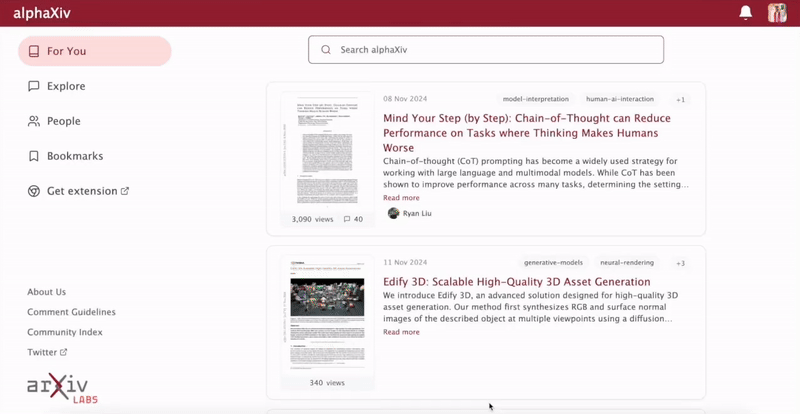JWST has uncovered a diverse population of extreme near-infrared dropouts, including ultra high-redshift (
z>15) galaxy candidates, dust-obscured galaxies challenging dust production theories, sources with strong Balmer breaks - possibly compact AGN in dense environments - and cold, sub-stellar Galactic objects. This work presents Capotauro, a F356W-dropout in the CEERS survey with F444W AB magnitude of
∼27.68 and a sharp
>3 mag flux drop between
3.5−4.5μm, undetected below
3.5μm. We combine JWST/NIRCam, MIRI, and NIRSpec/MSA data with HST/ACS and WFC3 observations to perform a spectro-photometric analysis of Capotauro using multiple SED-fitting codes. Our setup tests
z≥15 as well as
z<10 dusty, Balmer-break or strong-line galaxy solutions, and the possibility of Capotauro being a Milky Way sub-stellar object. Among extragalactic options, our analysis favors interpreting the sharp drop as a Lyman break at
z∼32, consistent with the epoch of formation of the first stars and black holes, with only
∼0.5% of the posterior volume at
z<25. Lower-redshift solutions struggle to reproduce the extreme break, suggesting that if Capotauro lies at
z<10, it must show a non-standard combination of strong dust attenuation and/or Balmer breaks, making it a peculiar interloper. Alternatively, its properties match a very cold (Y2-Y3 type) brown dwarf or a free-floating exoplanet with a record-breaking combination of low temperature and large distance (
T_{\mathrm{eff}}<300\,\mathrm{K},
d≳130pc, up to
∼2kpc). While current data cannot determine its nature, Capotauro emerges as a remarkably unique object in all plausible scenarios, and a compelling target for follow-up.






 University of Oxford
University of Oxford Space Telescope Science InstituteUniversität Heidelberg
Space Telescope Science InstituteUniversität Heidelberg Johns Hopkins University
Johns Hopkins University Princeton UniversityMasaryk UniversityEuropean Southern Observatory (ESO)Max-Planck-Institut für AstronomiePontificia Universidad Católica de ChileAstronomical Institute of the Czech Academy of SciencesCavendish LaboratoryUniversidad Adolfo IbáñezMillennium Institute for AstrophysicsUniversidad Adolfo Ib´a˜nezSofia University
D8
St Kliment OhridskiEl Sauce Observatory
D0
Obstech
Princeton UniversityMasaryk UniversityEuropean Southern Observatory (ESO)Max-Planck-Institut für AstronomiePontificia Universidad Católica de ChileAstronomical Institute of the Czech Academy of SciencesCavendish LaboratoryUniversidad Adolfo IbáñezMillennium Institute for AstrophysicsUniversidad Adolfo Ib´a˜nezSofia University
D8
St Kliment OhridskiEl Sauce Observatory
D0
Obstech Chinese Academy of Sciences
Chinese Academy of Sciences Imperial College London
Imperial College London New York University
New York University Beihang University
Beihang University Nanjing University
Nanjing University Peking University
Peking University Shandong UniversityIndian Institute of Science Education and Research KolkataKiel UniversityGeorg-August-Universität GöttingenSTFC Rutherford Appleton LaboratorySOKENDAI (The Graduate University for Advanced Studies)Instituto de Astrofísica de Andalucía (CSIC)Aryabhatta Research Institute of Observational SciencesSouthwest Research InstituteInter-University Centre for Astronomy and AstrophysicsMax-Planck-Institut für SonnensystemforschungJapan Aerospace Exploration AgencyUniversità di FirenzeInstitut d’Astrophysique SpatialePurple Mountain Observatory, CASDie Eidgenössische Technische Hochschule ZürichPhysikalisch-Meteorologisches Observatorium Davos, World Radiation CenterINAF—Osservatorio Astronomico di PalermoKey Laboratory of Modern Astronomy and Astrophysics, Ministry of Education
Shandong UniversityIndian Institute of Science Education and Research KolkataKiel UniversityGeorg-August-Universität GöttingenSTFC Rutherford Appleton LaboratorySOKENDAI (The Graduate University for Advanced Studies)Instituto de Astrofísica de Andalucía (CSIC)Aryabhatta Research Institute of Observational SciencesSouthwest Research InstituteInter-University Centre for Astronomy and AstrophysicsMax-Planck-Institut für SonnensystemforschungJapan Aerospace Exploration AgencyUniversità di FirenzeInstitut d’Astrophysique SpatialePurple Mountain Observatory, CASDie Eidgenössische Technische Hochschule ZürichPhysikalisch-Meteorologisches Observatorium Davos, World Radiation CenterINAF—Osservatorio Astronomico di PalermoKey Laboratory of Modern Astronomy and Astrophysics, Ministry of Education Monash University
Monash University Shanghai Jiao Tong University
Shanghai Jiao Tong University Tsinghua University
Tsinghua University Columbia UniversityXiamen UniversityUniversity of Southern QueenslandUppsala University
Columbia UniversityXiamen UniversityUniversity of Southern QueenslandUppsala University Australian National University
Australian National University University of Sydney
University of Sydney The Ohio State University
The Ohio State University Flatiron InstituteINAF - Osservatorio Astrofisico di TorinoUniversity of Hawai‘iMax Planck Institute for Astronomy
Flatiron InstituteINAF - Osservatorio Astrofisico di TorinoUniversity of Hawai‘iMax Planck Institute for Astronomy University of Washington
University of Washington CNRS
CNRS University of Toronto
University of Toronto California Institute of Technology
California Institute of Technology University of Illinois at Urbana-Champaign
University of Illinois at Urbana-Champaign University of PittsburghUniversity of Oslo
University of PittsburghUniversity of Oslo University of CambridgeSLAC National Accelerator Laboratory
University of CambridgeSLAC National Accelerator Laboratory UCLANational Astronomical Observatory of Japan
UCLANational Astronomical Observatory of Japan Imperial College London
Imperial College London University of Manchester
University of Manchester University of Chicago
University of Chicago University of OxfordUniversidad de Concepcion
University of OxfordUniversidad de Concepcion Osaka University
Osaka University Stanford University
Stanford University University of MichiganUniversity of Edinburgh
University of MichiganUniversity of Edinburgh University of California, San Diego
University of California, San Diego McGill University
McGill University University of British Columbia
University of British Columbia Yale UniversityOkayama UniversityUniversité Paris Cité
Yale UniversityOkayama UniversityUniversité Paris Cité University of Texas at Austin
University of Texas at Austin Columbia University
Columbia University Space Telescope Science Institute
Space Telescope Science Institute University of Pennsylvania
University of Pennsylvania Johns Hopkins University
Johns Hopkins University Arizona State University
Arizona State University University of Minnesota
University of Minnesota University of Maryland
University of Maryland Brookhaven National Laboratory
Brookhaven National Laboratory Université Paris-Saclay
Université Paris-Saclay Stockholm UniversityNational Tsing Hua University
Stockholm UniversityNational Tsing Hua University Lawrence Berkeley National Laboratory
Lawrence Berkeley National Laboratory University of California, DavisUniversity of Rome Tor VergataCase Western Reserve University
University of California, DavisUniversity of Rome Tor VergataCase Western Reserve University Princeton UniversityNational Institute of Standards and TechnologyCardiff UniversityHigh Energy Accelerator Research Organization (KEK)University of Colorado Boulder
Princeton UniversityNational Institute of Standards and TechnologyCardiff UniversityHigh Energy Accelerator Research Organization (KEK)University of Colorado Boulder University of VirginiaUniversity of SussexInstitut d’Astrophysique de ParisUniversity of Wisconsin–MadisonJet Propulsion LaboratoryUniversity of Cape TownLudwig Maximilian University of MunichUniversity of StavangerUniversity of KwaZulu-NatalCEA SaclayAustralian Astronomical OpticsKavli Institute for Particle Astrophysics and CosmologyInstitut d'Astrophysique Spatiale1Simons ObservatoryI. Abril-Cabezas,
University of VirginiaUniversity of SussexInstitut d’Astrophysique de ParisUniversity of Wisconsin–MadisonJet Propulsion LaboratoryUniversity of Cape TownLudwig Maximilian University of MunichUniversity of StavangerUniversity of KwaZulu-NatalCEA SaclayAustralian Astronomical OpticsKavli Institute for Particle Astrophysics and CosmologyInstitut d'Astrophysique Spatiale1Simons ObservatoryI. Abril-Cabezas,